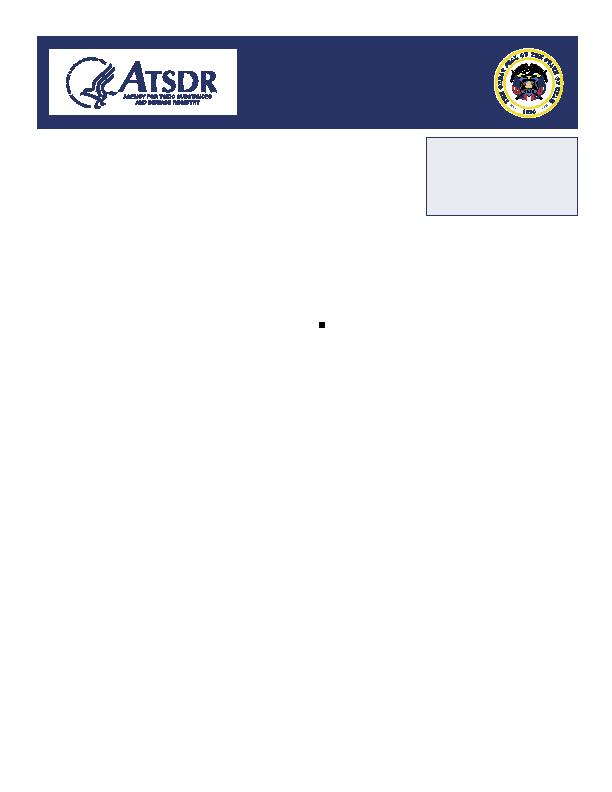
Activities in
Utah
ATSDR in Partnership With Utah
available data and
ATSDR awarded more
information about
The Agency for Toxic Substances and Disease
than 7,000 in the last
the release of haz-
Registry (ATSDR) is the lead public health agency
2 years in direct funds and
ardous substances
responsible for implementing the health-related
services to Utah.
into the environ-
provisions of the Comprehensive Environmental
ment in a specific
Response, Compensation, and Liability Act of 1980
geographic area.
(CERCLA). ATSDR is an Atlanta-based federal
Such releases are assessed for current or future impact
agency with more than 400 employees and a budget
on public health. ATSDR, in collaboration with public
for 2004 of approximately million. ATSDR
health and environmental officials from Utah, has
assesses the presence and nature of health hazards at
conducted 28 public health assessments in the state,
specific Superfund sites, helps to prevent or reduce
including the following recent examples.
further exposure and illnesses resulting from those
hazards, and expands the knowledge base about the
Eureka Mills--The Eureka Mills site is in
health effects of exposure to hazardous substances.
Eureka City, approximately 70 miles south
ATSDR works closely with state agencies to carry
activities conducted in this area from 1870 to 1965
out its mission to serve the public by using the best
resulted in elevated levels of metals in the soil.
science, taking responsive public health actions,
Much of the impacted area is residential. The site
and providing trusted health information to prevent
is a current public health hazard.
harmful exposures and disease related to toxic
substances. ATSDR provides funding and technical
Interest in the site began in July 2000 when the
assistance to states and other partners through
Utah Department of Environmental Quality
(UDEQ) discovered elevated levels of metals in
evaluate environmental health threats to communities.
residential soil. Subsequent sampling programs
These resources enable state and local health
by UDEQ and the U.S. Environmental Protection
departments and other grantees to further investigate
Agency (EPA) found 25,000 parts per million
environmental health concerns and to educate
(ppm) lead in residential areas and 51,000 ppm
communities. In fiscal years 19892003, ATSDR
lead in the nonresidential areas surrounding
awarded more than
||content||
.4 million--more than 7,000
in the last 2 years--in direct funds and services to
thallium also were discovered. EPA and UDEQ
Utah for comprehensive support of its environmental
identified preliminary remediation goals of
health unit. In addition to direct funds and services,
231 ppm lead in soil from residential areas
ATSDR staff provides technical and administrative
and 735 ppm in soil from nonresidential areas.
guidance for state-conducted site activities.
Cleanup of lead to these levels is expected to
remove the hazards posed by the other metals.
ATSDR Site-Specific Activities
After the discovery of elevated lead in residential
Public Health Assessment-Related Activities
soils in Eureka City, an ATSDR exposure
investigation was conducted. The investigation
One of ATSDR's important mandates is to conduct
began in August 2000 and ended in September
2001. The investigation concluded that children
List (NPL) sites and of other sites where a significant
living in Eureka City are 10 times more likely than
threat to public health might exist. A public health
other Utah children to have elevated blood lead
assessment is a written, comprehensive evaluation of


 Previous Page
Previous Page
